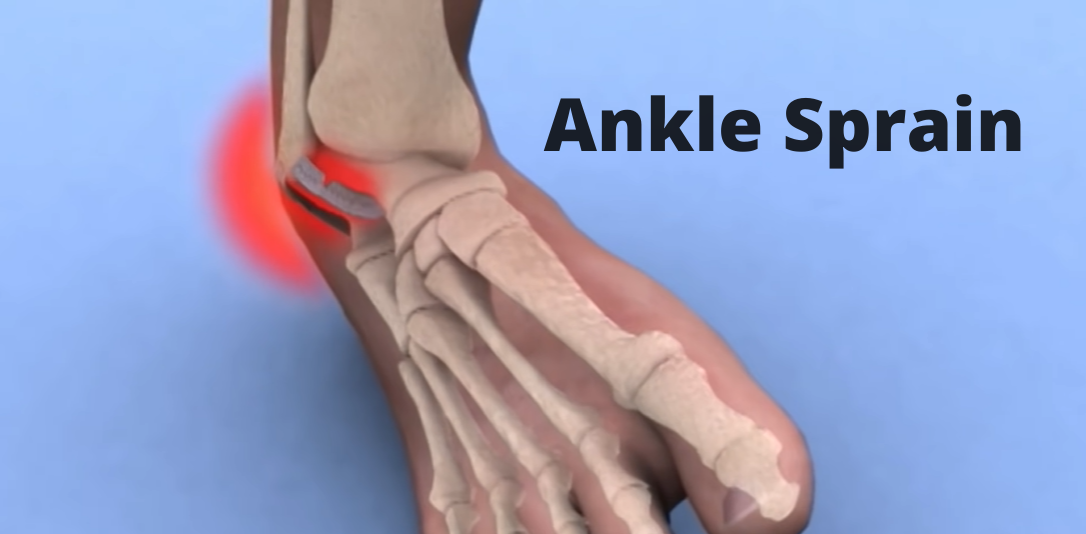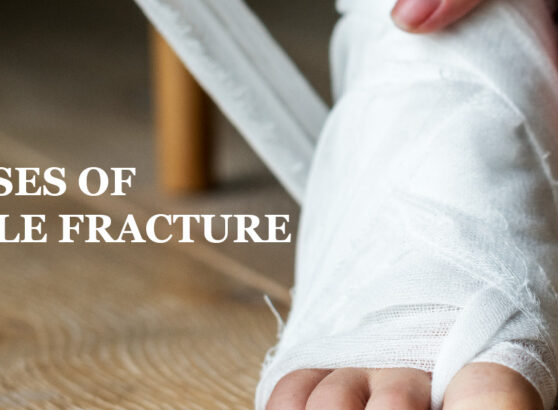In this article, today we are going to talk about an Ankle sprain.
I have covered the anatomy first and then what actually happening when an ankle sprain happens? And then why it happens? And how to prevent the ankle sprain?
Anatomy of a Sprain: (What is Ankle Sprain?)
Your ankle functions as a hinge joint. The unique design makes it a very stable joint.
Ankle stability is crucial because your ankle has to support half of your body weight when you walk and up to eight times your body weight when you run.
Normal ankle function is essential in walking, running, and jumping. Your ankle stability is supported by the muscles, tendons, and ligaments surrounding your joints.
First of all, we have a bone that’s called Tibia. Alongside it, on the outside, we have a bone called Fibula. And sitting in the middle of both of these bones is a bone called the talus. Hooked on the talus is the rest of the foot and ankle.
Sprains are injuries to ligaments that cause overstretching or tearing. These ligaments are responsible for connecting the bones. Ankle sprains are common injuries that happen to patients like young and old.
Sprains of these ligaments usually occur when your ankle is twisted or turned in.
Depending on your injury, the ligaments can be either partially or completely torn.
What are the most common causes of ankle sprains?
The most common causes of ankle sprains are typically injuries with athletes and people who are walking on uneven surfaces.
The most common ankle sprain that people see is often one where the ankle rolls inwards and it causes tearing or stretching of the ligaments on the outside of the ankle.
Ankle sprains could be classified in two ways:
Lateral Ankle Sprains:
Which is the most common ankle sprain. And there are typically three grades to those.
- Grade 1 sprain (Mild): Mild injury to the ankle’s main ligament.
- Grade 2 sprain (Moderate): Partial tearing to multiple ligaments.
- Grade 3 sprain (Severe): Severe tearing which affects all three main ligaments of the ankle.
High Ankle Sprains:
The second type of injury is called a high ankle sprain. And that’s typically when an injury occurs to the ankle where the foot will turn outward.
And the ligaments are damaged that connect the two bones of the legs called the tibia and the fibula together.
And those ligaments can either stretch or tear. And that can be somewhat of a more debilitating injury than your typical lateral ankle sprain.
If those ligaments get torn those two bones will piston and separate when you walk and that can cause a significant injury to the point where it can need surgical correction.
Ankle Sprain Symptoms:
Swelling:
You can see a Grade 1 ankle sprain. Which will often appear with some swelling on the outside of the ankle.
Bruising:
The bruising can even extend to the toes and even up in the leg and calf. Depending on how much force the injury was sustained upon.
A Stage two injury where there’s some tearing of the ligaments can lead to the point. Where you have swelling which almost looks like a golf ball or a grapefruit on the outside of the ankle.
And obviously that bruising will cause much more significant color changes to the extremity and it’ll cause a lot more swelling to the extremity.
The reason that will swell much more is that when the ligament’s tear. The joint fluid can actually leave the ankle and start to collect underneath the skin and will cause the focal amount of swelling.
Possible fracture:
Oftentimes a high ankle sprain will even cause a fracture to the upper bone of the leg called a fibula, just below the knee.
So you can often see swelling from the knee or the lower thigh down to the toes.
And the bruising can kind of follows that swelling path as well.
Difficulty walking:
The patient had difficulty walking. Especially on incline or decline. Patients will often describe a situation where they have a difficult time going downstairs, but going upstairs they have the ability to be comfortable.
Many times with a Grade 1 or Grade 2 injury the patient can walk flat-footed without pain. It’s when they try to do any hyperextension or hyperflexion that’s the injury can become very noticeable.
And it’s often noted that when people have ankle injuries the first three or four days are the most painful because that’s when the swelling is really starting to penetrate the joint.
As the body starts to adjust for the amount of swelling, that’s when the ankle injury will start to settle down.
How is an ankle sprain diagnosed?
The treatment is typically non-surgical you go to your doctor or you go to an orthopedic surgeon they’re going to examine your ankle maybe get X-rays to rule out that you broke a bone or a fracture.
Usually, we don’t need to get an MRI because the diagnosis at least at first is pretty straightforward.
How is an ankle sprain treated?
So early on you’re going to try things like ice and elevation may be compression with an ace wrap or something like that to get the swelling down.
You go to the doctor they may put you in a pain relief brace of some sort to give you stability side to side.
They’ll probably also ask to work with a physical therapist at first. That’s getting motion back and getting strengthen your ankle and foot in your leg.
So that you can regain your joint position sense. So that your ankle can stabilize itself on uneven surfaces.




